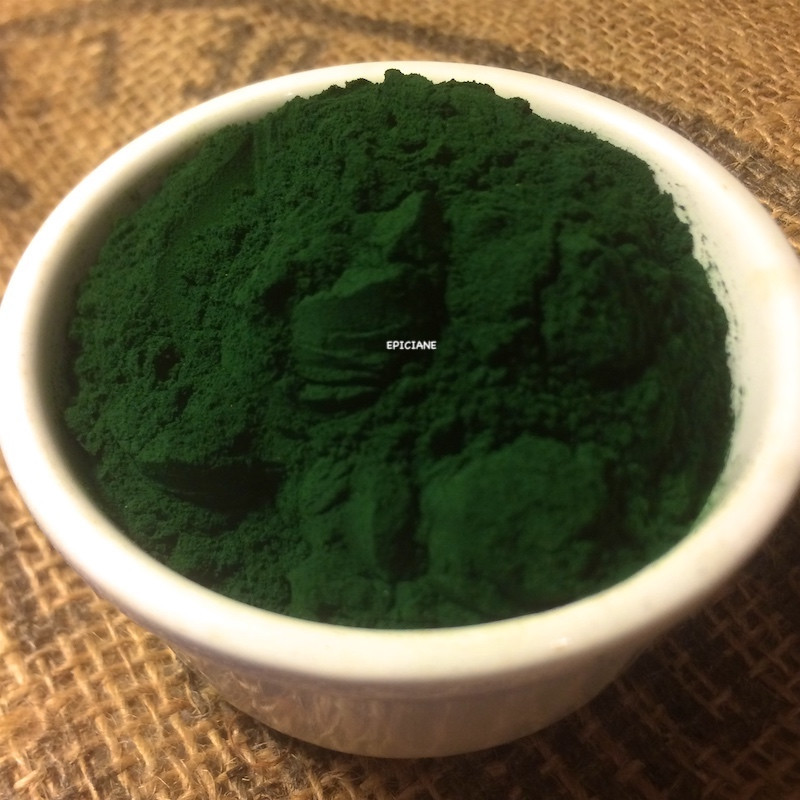
Reference: pellebuisG8


A true superfood, spirulina is a spiral-shaped algae.
Packed with benefits, it may well become one of the primary foods for interstellar travel.
 Delivery
Delivery
Mondial Relay
 Returns
Returns
See conditions
 Payments
Payments
100% secure
My Uses:
This lovely fine powder with a deep emerald green color is packed with benefits! Extremely low in calories (no one will complain about that!), it’s a powerhouse of nutrients in a small volume: 55 to 70% high-quality protein (providing 2.5g to 3.5g of protein per 5g of powder), antioxidants, gamma-linolenic acid (omega-6 family), and iron (3 to 8mg per 5g). This is why spirulina is often considered a health superfood!
Spirulina has significant nutritional value, as 10g of spirulina (about 2 teaspoons) equates roughly to eating 1/2 to 1 cup of broccoli (for iron), 1 carrot (for carotenoids), and 1 egg (for protein). While spirulina contains fewer fibers than these foods, it can benefit those who don’t consume enough vegetables. It isn’t necessarily better than fresh fruits and vegetables, but it is an effective way to boost daily intake of carotenoids, iron, and protein in a single food source.
Among its many benefits, spirulina may also increase endurance, reduce post-exercise soreness, and improve physical performance. It’s also an excellent detoxifier.
Its stimulating effect suggests avoiding consumption in the evening.
Generally, a daily intake of 1g to 3g is recommended, depending on the desired benefits.
You can consume it as is or mix it into yogurt, vegetable, or fruit juice.
Who am I?
Origin: China
Spirulina is a spiral-shaped algae (hence its name) that has existed on Earth for over 3 billion years. It belongs to the cyanobacteria family or blue-green microalgae. There are over 30 edible species of this algae type, the most common being Spirulina platensis. These species are native to warm, brackish, shallow waters rich in organic matter in tropical regions. Spirulina multiplies rapidly once temperatures exceed 30°C.
It was initially cultivated in California and Hawaii, but today it’s grown worldwide, where the climate allows. Spirulina became popular as a health food in industrialized countries in the 1970s.
Cultivation is mainly conducted outdoors, in shallow water basins exposed to sunlight, in highly alkaline water (pH around 10) maintained between 30 and 35°C. After filtering, draining, washing, and drying, it becomes a dehydrated product. When conditions are optimal, the yield is high, reaching up to 9 tons per hectare compared to 1 ton for wheat or soy.
A Little History:
During the discovery of Central America, Europeans observed that the Aztecs harvested a type of blue mud, called "tecuitlatl," from Lake Texcoco near Mexico—our famous spirulina. In Africa, some Saharan tribes have long harvested a similar substance from Lake Chad, consumed as dried cakes called "dihé," especially during food shortages.
Since the late 1980s, NASA has been researching spirulina to create an Earth-like ecosystem that could accompany astronauts in space on long-duration missions. It could become an essential survival food, also producing a significant amount of oxygen.
Data sheet
Reference: pellebuisG8
Reference: 9K5061101
Reference: 9N7669901
Reference: 7K4954201
Reference: 20731803
Reference: 121320001
Reference: 112930001
Reference: 6L5609803
Reference: laurierE
Reference: 408164502
Reference: aubepinefl
Reference: 6N7456401
Reference: 9K5061101
Reference: 11N7866301
Reference: angelique
Reference: 6K4878201
Reference: gentiane
Reference: 3N7201902

A true superfood, spirulina is a spiral-shaped algae.
Packed with benefits, it may well become one of the primary foods for interstellar travel.